Spathiphyllum petite
Scientific name: Spathiphyllum petite
Family: Araceae
Maximum size reached under cultivation: 20 - 30 cm (7.87 - 11.81 inch)
014
Recommended pH range: 6 - 7.2
Recommended water hardness: 4 - 12°dGH (71.43 - 214.29ppm)
0°C 32°F30°C 86°F
Recommended temperature range: 22 - 28 °C (71.6 - 82.4°F)
Preferred propagation method: Divisions
Native to: South America
Growth rate: Slow
Recommended substrate: Gravel
Lighting requirements: Medium
Ideal placement in tank: Background
Family
Araceae
Common Name
Petite Peace Lily
Propagation
Spathiphyllum petite is best propagated through division rather than cuttings. To propagate, carefully remove the plant from its container or substrate and gently separate the root ball into smaller sections, each with healthy roots and at least a few leaves. These divisions can then be replanted in moist substrate or potting medium. The plant prefers warm, humid conditions for successful establishment. Propagation by seeds is possible but rarely practiced due to the plant's slow growth rate and the difficulty of obtaining viable seed. Division remains the most reliable and efficient method, especially in paludarium or semi-aquatic setups.
Difficulty
Medium. Spathiphyllum petite adapts well to a variety of water conditions, but it is not a fully aquatic species. It thrives in environments where its roots are submerged, but the leaves remain above water, making it more suitable for paludariums, ripariums, or shallow aquariums rather than fully submerged conditions.
Short Description
Commonly known as Petite Peace Lily, Spathiphyllum petite is a compact, slow-growing plant that originates from the tropical regions of South America. While it is popular as a houseplant, it is also frequently used in terrariums and paludariums due to its tolerance for partial submersion. In aquarium settings, only the roots should be submerged while the leaves remain above water, as full submersion can lead to rot. Reaching a maximum height of 30 cm (11.81 inches), this plant thrives in medium lighting and adds a touch of lush greenery to any setup.
Maintenance and Care
Spathiphyllum petite requires moderate care due to its sensitivity to full submersion. It thrives in humid environments where its roots can be submerged, but the leaves should stay above the water. Regularly removing dead leaves and flowers is necessary to keep the plant healthy, especially in aquariums where decaying matter can affect water quality. It prefers a pH range of 6 to 7.2, water hardness between 4 - 12°N (71.43 - 214.29 ppm), and temperatures between 22 - 28°C (71.6 - 82.4°F).
Compatibility
Compatible with most peaceful aquarium species, Spathiphyllum petite serves as a decorative plant in terrariums, paludariums, or shallow tanks. While it doesn’t offer much shelter for fish, it adds a natural, lush appearance to any tank. Since it is not fully aquatic, care must be taken to ensure the water level remains below the base of the plant’s leaves to prevent rotting.
Submersion and Aquascaping
Spathiphyllum petite is not a true aquatic plant, and full submersion will lead to its decline. It is best used in aquascaping where the roots are submerged, but the leaves remain above the waterline. This makes it an excellent choice for paludariums or shallow tanks, where it provides a vibrant, green accent. Its compact size and slow growth make it ideal for smaller setups, offering a low-maintenance yet elegant addition for aquarists and terrarium enthusiasts alike.
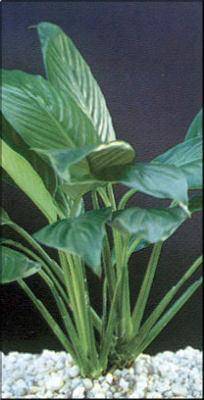
 Aglaonema commutatum “Silver Queen”
Aglaonema commutatum “Silver Queen”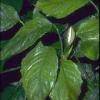 Aglaonema simplex
Aglaonema simplex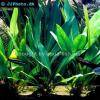 Anubias afzelii
Anubias afzelii Anubias barteri
Anubias barteri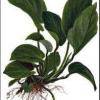 Anubias barteri “Caladiifolia” ‘1705’
Anubias barteri “Caladiifolia” ‘1705’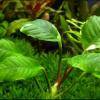 Anubias barteri “Coffeefolia”
Anubias barteri “Coffeefolia” Anubias barteri “Nana”
Anubias barteri “Nana”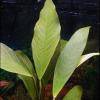 Anubias barteri v. angustifolia
Anubias barteri v. angustifolia Anubias gracilis
Anubias gracilis Anubias heterophylla
Anubias heterophylla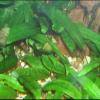 Cryptocoryne affinis
Cryptocoryne affinis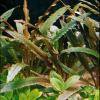 Cryptocoryne albida
Cryptocoryne albida Cryptocoryne balansae
Cryptocoryne balansae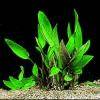 Cryptocoryne becketti
Cryptocoryne becketti Cryptocoryne blassi
Cryptocoryne blassi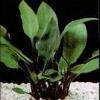 Cryptocoryne ciliata
Cryptocoryne ciliata Cryptocoryne cordata
Cryptocoryne cordata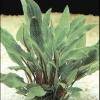 Cryptocoryne lutea
Cryptocoryne lutea Cryptocoryne nevillii
Cryptocoryne nevillii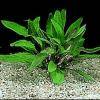 Cryptocoryne petchii
Cryptocoryne petchii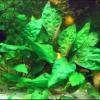 Cryptocoryne pontederiifolia
Cryptocoryne pontederiifolia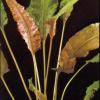 Cryptocoryne wendtii
Cryptocoryne wendtii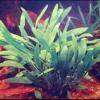 Cryptocoryne willisii
Cryptocoryne willisii Lagenandra ovata
Lagenandra ovata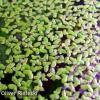 Lemna minor
Lemna minor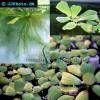 Pistia stratiotes
Pistia stratiotes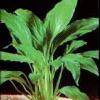 Spathiphyllum wallisii
Spathiphyllum wallisii